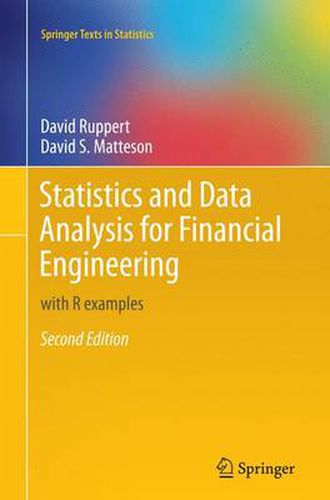Readings Newsletter
Become a Readings Member to make your shopping experience even easier.
Sign in or sign up for free!
You’re not far away from qualifying for FREE standard shipping within Australia
You’ve qualified for FREE standard shipping within Australia
The cart is loading…






The new edition of this influential textbook, geared towards graduate or advanced undergraduate students, teaches the statistics necessary for financial engineering. In doing so, it illustrates concepts using financial markets and economic data, R Labs with real-data exercises, and graphical and analytic methods for modeling and diagnosing modeling errors. These methods are critical because financial engineers now have access to enormous quantities of data. To make use of this data, the powerful methods in this book for working with quantitative information, particularly about volatility and risks, are essential. Strengths of this fully-revised edition include major additions to the R code and the advanced topics covered. Individual chapters cover, among other topics, multivariate distributions, copulas, Bayesian computations, risk management, and cointegration. Suggested prerequisites are basic knowledge of statistics and probability, matrices and linear algebra, and calculus. There is an appendix on probability, statistics and linear algebra. Practicing financial engineers will also find this book of interest.
$9.00 standard shipping within Australia
FREE standard shipping within Australia for orders over $100.00
Express & International shipping calculated at checkout
The new edition of this influential textbook, geared towards graduate or advanced undergraduate students, teaches the statistics necessary for financial engineering. In doing so, it illustrates concepts using financial markets and economic data, R Labs with real-data exercises, and graphical and analytic methods for modeling and diagnosing modeling errors. These methods are critical because financial engineers now have access to enormous quantities of data. To make use of this data, the powerful methods in this book for working with quantitative information, particularly about volatility and risks, are essential. Strengths of this fully-revised edition include major additions to the R code and the advanced topics covered. Individual chapters cover, among other topics, multivariate distributions, copulas, Bayesian computations, risk management, and cointegration. Suggested prerequisites are basic knowledge of statistics and probability, matrices and linear algebra, and calculus. There is an appendix on probability, statistics and linear algebra. Practicing financial engineers will also find this book of interest.